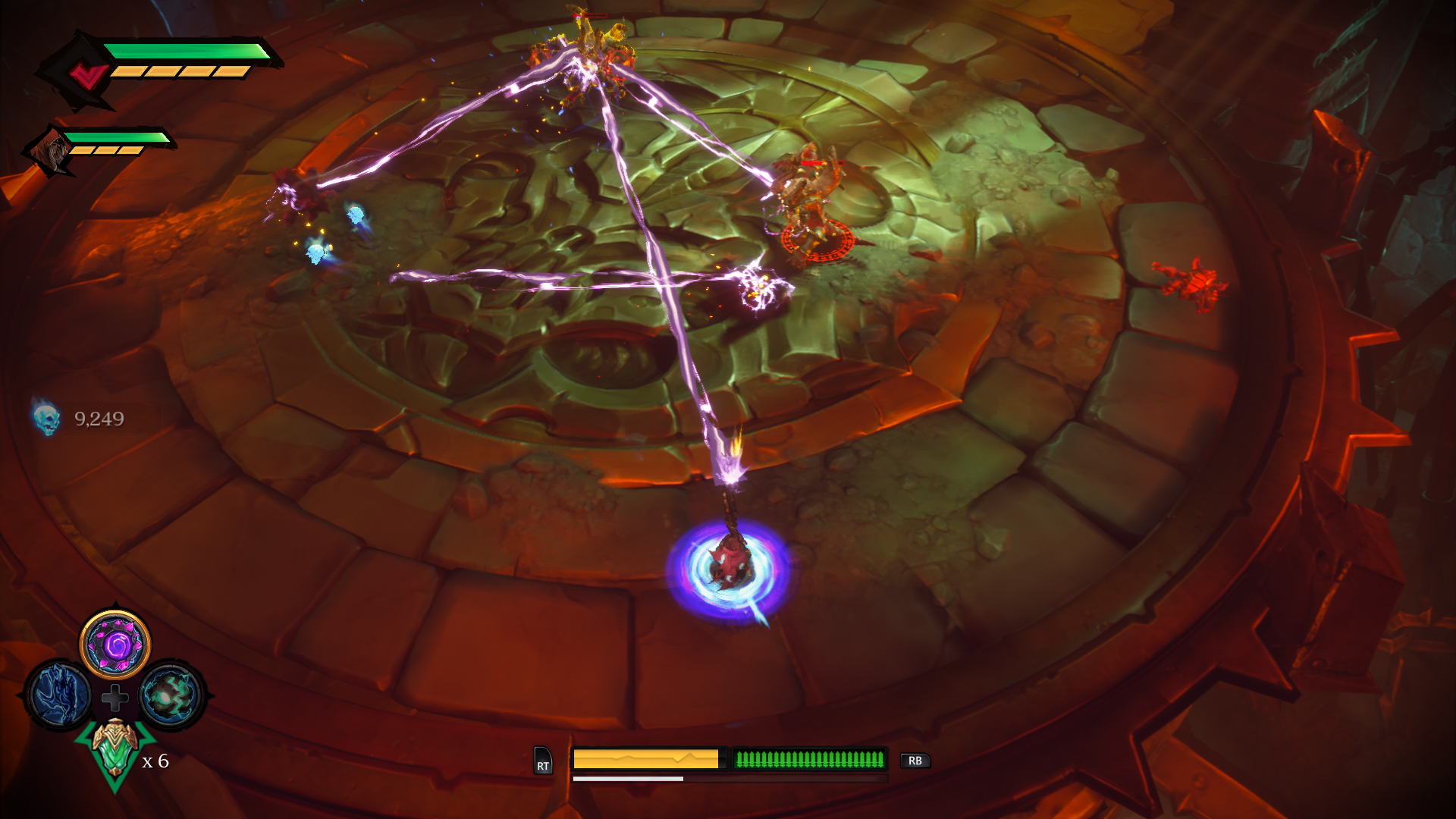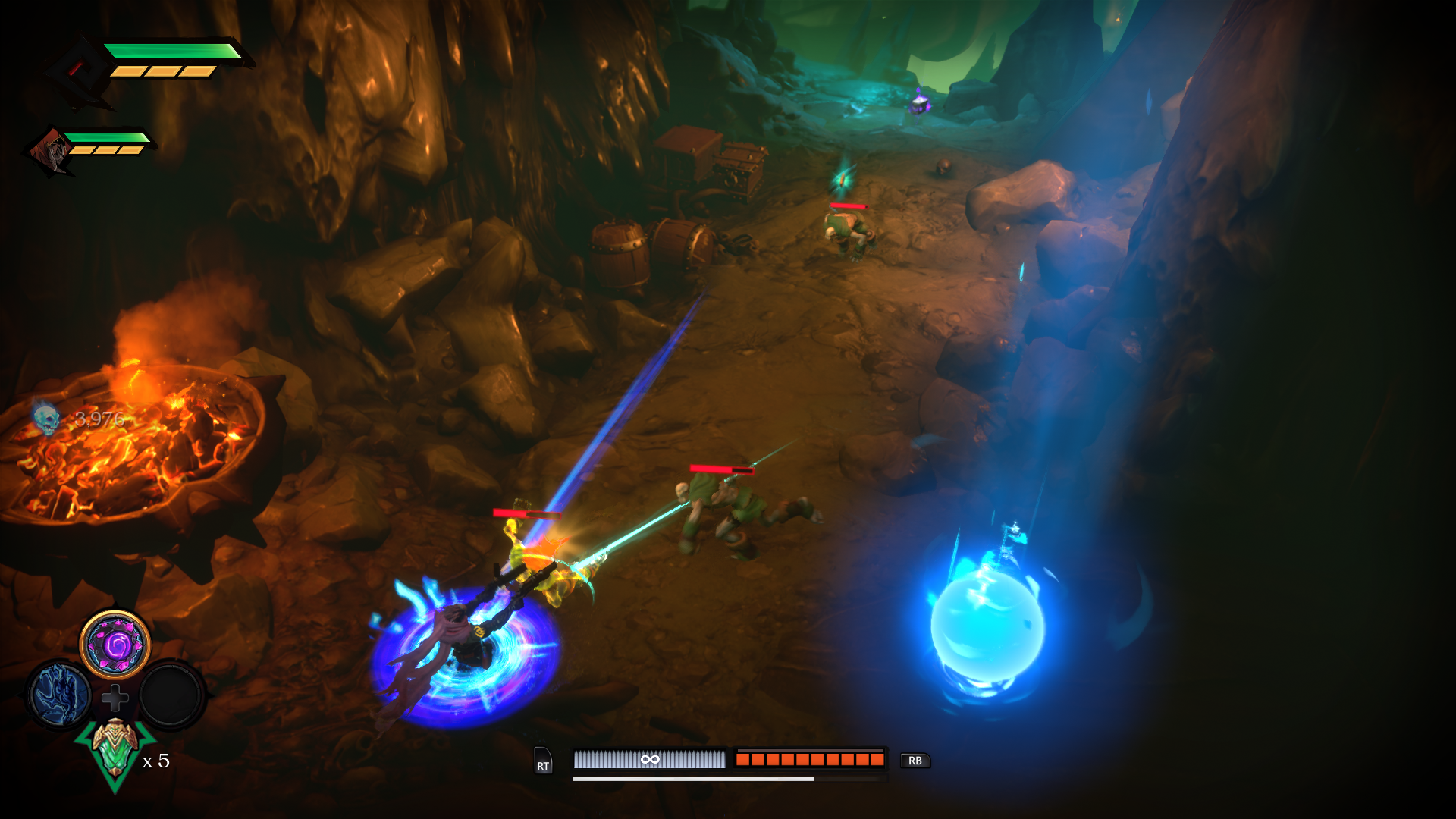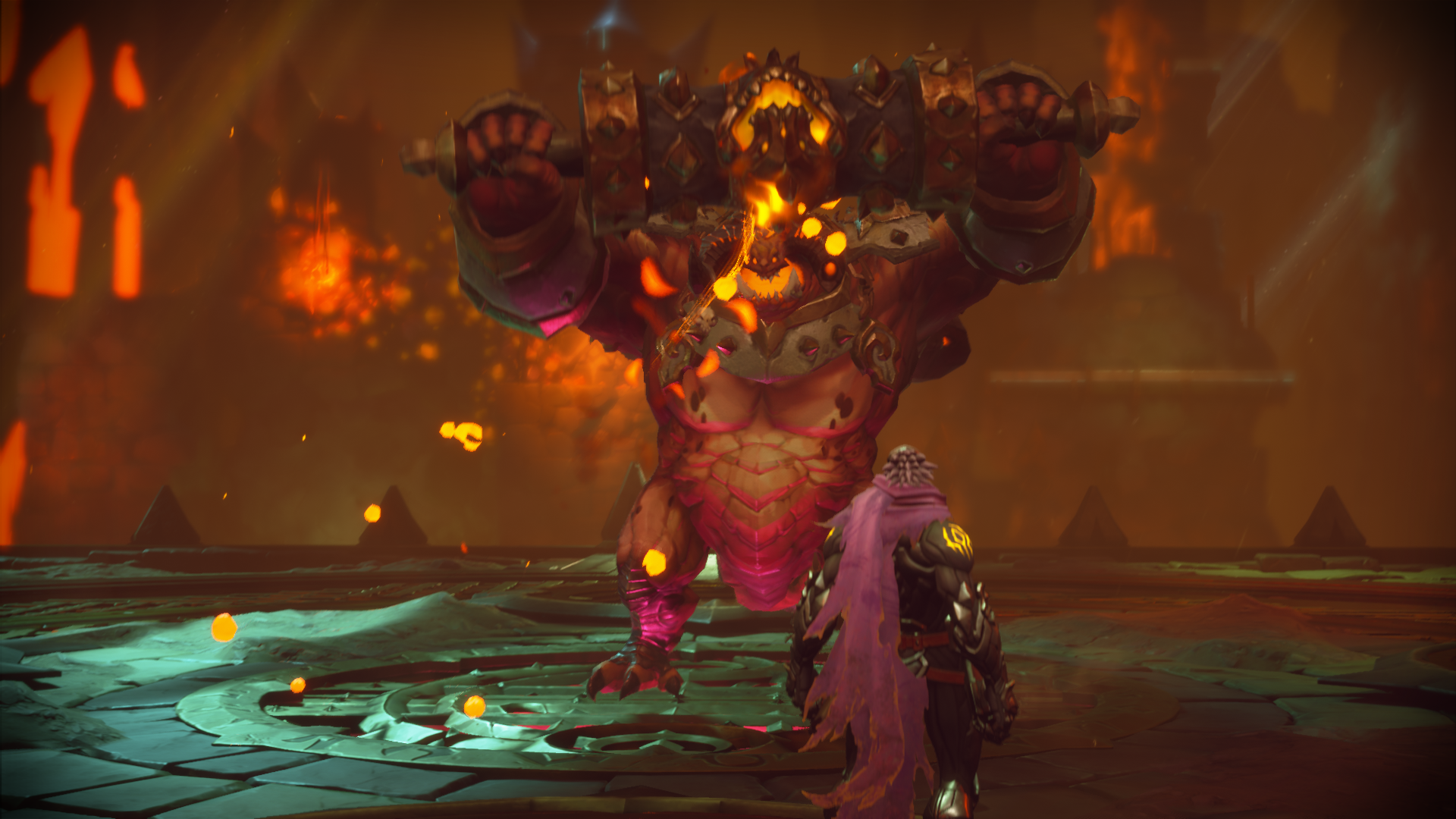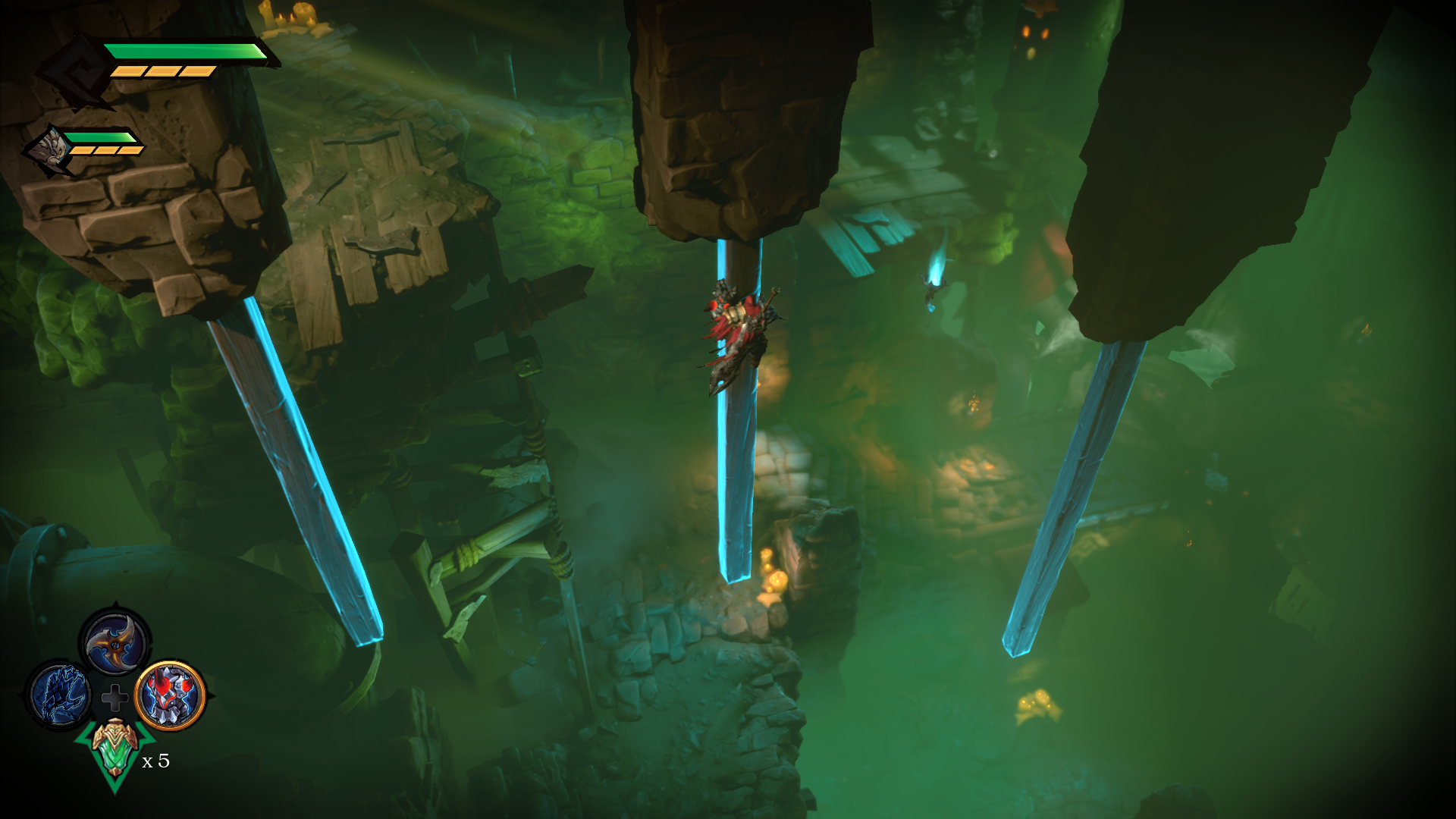Our Verdict
A great one-shot adventure or an enjoyable grindfest, depending on which you want.
PC Gamer's got your back
What is it? The end of the world as we know it, in action-RPG form.
Expect to pay $30/£27
Developer Airship Syndicate
Publisher THQ Nordic
Reviewed on GeForce GTX 1650, AMD Ryzen 5 3550H, 8 GB RAM
Multiplayer 2 player co-op (online or splitscreen)
Link Official site
Darksiders has always bounced gleefully from one influence to the next. The first game borrowed heavily from Nintendo’s Zelda series, while the second—which starred a hilariously ripped version of Death—clearly took its wallrunning cue from the Prince of Persia reboot. Then, the Gunfire Games-developed Darksiders 3 decided to join the wearisomely long line of titles trying to copy Dark Souls. Given the history of the series, the move to an entirely different genre isn’t as jarring as it might be.
Darksiders Genesis is an action-RPG, with all the waves of enemies and grabbing of loot that you might expect. I’m slightly surprised, therefore, to find that it still immediately and consistently feels like Darksiders. It’s a canon prequel to the first game, which follows War and, for the first time, Strife. Notorious rascal Lucifer is up to something, and The Council have taken time out from changing the bin collection days without telling anybody to instruct these two lovable harbingers of doom to find out what it is.
Developer Airship Syndicate—which was formed by members of Vigil Games, who made the first two Darksiders games—has an obvious, genuine fondness for the series. Not only do we see returning characters such as Samael and Vulgrim (I never would’ve forgiven the absence of my favourite demonic shopkeeper), weapons and abilities from the core games have been carefully integrated. For example, War still has his boomerang-like Vorpal Blade, both horsemen can grab objects from afar with a sort of ghostly Inspector Gadget arm, and Strife soon unlocks the Void Bomb for some portal creation shenanigans. Fellow Darksiders fans, we are home!

I instantly gravitated towards Strife simply because this is the first game he’s appeared in, but I soon found that he matched my play style well enough for me to stick almost exclusively with him. Although he’s a decent melee fighter, Strife dual wields guns, and is designed for fighting at a distance. His standard infinite bullets do the job just fine, but there’s different types of ammo to be found, most of which you have to search for. The more powerful shot types tend to draw from a finite ammo supply however, so you can’t carve your way through with, say, a laser beam for long.
War plays completely differently. He’s almost powerless at a distance, so it’s all about hitting enemies with a comically large sword. You can simply button bash if you’re playing on Casual difficulty, but anything above that requires you to explore the nuances of combat. Although he’s not my preferred character, I still really enjoy his playstyle. A large part of this comes down to the simple fact that he can block and parry. That doesn’t sound particularly interesting; but let me tell you, going toe-to-toe with a large fiery demon, and killing it without losing so much as a sliver of health, is always a nice little ego boost. There are abilities and combos to unlock and power up, too. The experience changes to a pleasing degree depending on who you play as.
Dark life
The characters differ not only in play style, but also in personality, and this is one of the areas where I find myself slightly disappointed. The Darksiders story has always been silly, but (in the first two games, at least) a kind of perfect silly—a self-important nonsense that takes itself just seriously enough to be enjoyable without straying into tiresome. Things have catapulted too far in the other direction here. It’s too self aware, too ready to make a joke at its own expense. It’s not self-parody, but rather a swapping of biblical fantasy for explicit comedy. Strife talks like a joking rogue cop who Does His Own Thing, while War is his hulking, overly serious foil. Basically, Strife is a cross between Axel Foley and Peter Quill, while War has been turned into a cross between Drax and your dad. Worst of all, I counted precisely one joke in the entire script that made me laugh.

Still, the talking head story sequences can be skipped if you wish, and the action is thankfully miles ahead of the writing. There are 16 chapters in all, and each one (excluding the five which are major boss fights) is a superbly designed open map. You’re prevented from riding your ghostly horse across a frustratingly large percentage of the landscape, but combat is more fun on foot anyway. Yes, there are swarms of demonic baddies to kill punctuated by the occasional bit of light puzzling, but that’s only half the story.
There are many nooks and, indeed, crannies that can be missed on your way to the end of the level. Some of these will be impossible to access first time round. You might not have the ability needed to, say, smash through an obstacle or activate what is in effect an apocalyptic trampoline. Then there are Trickster doors. These are usually hidden, and require special collectible keys to unlock (often, more than one at a time). These might lead to a small room with goodies and a handful of enemies, or a larger area similarly laden with treasure. It’s well worth seeking these and other hidden areas out. I was rewarded for completing a slightly annoying optional puzzle, with an ammo type that makes enemies bleed health orbs, something that came in very handy for the final boss.
It’s important to hoover up everything that bursts from chests, broken boxes, and fallen enemies—souls (the game’s currency), ammo, health, Wrath orbs to power limited-use abilities—but nothing is ultimately more important than creature orbs. There’s no traditional character levelling. Instead, each enemy in the game is represented by an orb that you can equip in a skill tree, which increases your characters’ power ratings as well as bestowing individual buffs. These orbs are dropped randomly (with the exception of bosses), and it’s not quite as simple as grabbing one and equipping it in the menu.

Each orb has multiple power levels. Equipping one automatically activates level one, but you’ll have to collect many of the same type, usually dozens, to fully power it up. There are further complications too, such as matching bonuses within the tree, and some nodes limiting the potential of an orb. So if you want to, say, maximise your attack power, you’ll need to have the right orbs in the right slots, and keep revisiting levels heavily populated with the enemies you’re after.
Grind and bear it
This might sound complicated and grind-heavy. Therein lies the genius of Darksiders Genesis; it’s not complicated, and it’s only grind-heavy if you want it to be. Clearly aware that the game might attract Darksiders fans who wouldn’t usually consider playing an isometric action-RPG, the developers have made provisions for those who want to play through the game start to finish without looking back. Casual difficulty is forgiving enough to give the orb tree only the briefest of considerations. I initially played through on Normal, and managed to finish with very little grinding thanks to the orb tree and my tactics during play. In fact, I constantly ignored recommended power levels for chapters, and probably could have finished with no grinding at all. Hard difficulty obviously requires you to be a bit more careful—but, for those who live for the grind, it’s after you see the credits roll that the true game begins.
Vanquish the big bad at the end of the story (who, incidentally, represents an enormous difficulty spike), and Apocalyptic difficulty is unlocked. This difficulty setting is not messing around, and will see you dead within minutes if you’re careless or poorly prepared. With all chapters now at your disposal, it’s time to construct the very best orb tree you can, and comb back through each level again and again. Find every path and collectible, max out that orb tree, purchase all those upgrades, take a deep breath, and do it all over again on Apocalyptic.

Partway through your adventure, you unlock the Arena. This is a series of survival challenges, each consisting of ten waves of enemies, with an endless mode to be unlocked once you’ve mastered all the others. This feeds from and into the grinding loop in an interesting way. It’s great for grinding, as it’s a simple and relatively quick way to harvest creature orbs and souls. Challenges inevitably increase in difficulty as you make your way through the list, however, requiring you to power up more and more in order to have a decent chance of success.
There are plenty of reasons to keep coming back, then, to the simple but satisfying combat. It won’t be long before the levels have given up all their secrets, but what remains is a solid apocalyptic grind.
A great one-shot adventure or an enjoyable grindfest, depending on which you want.


